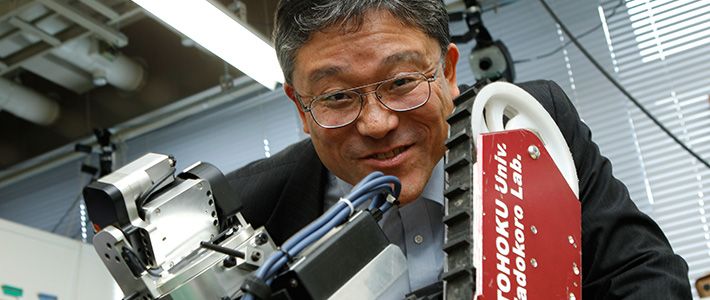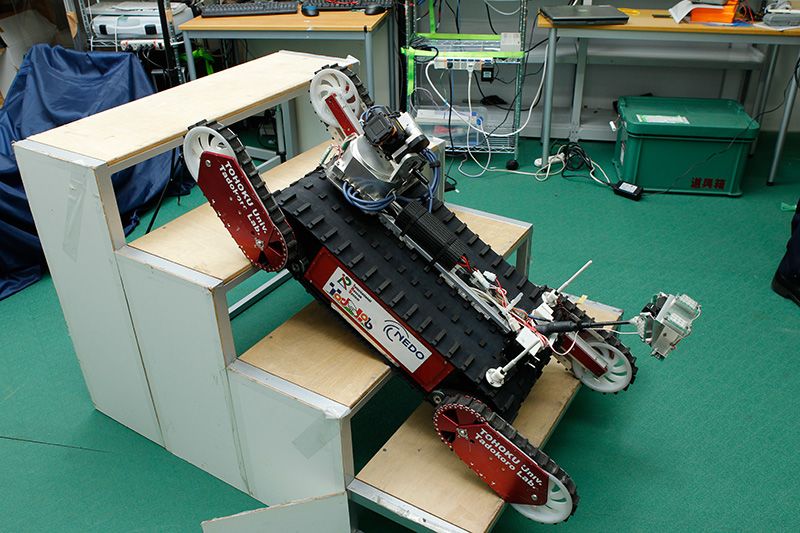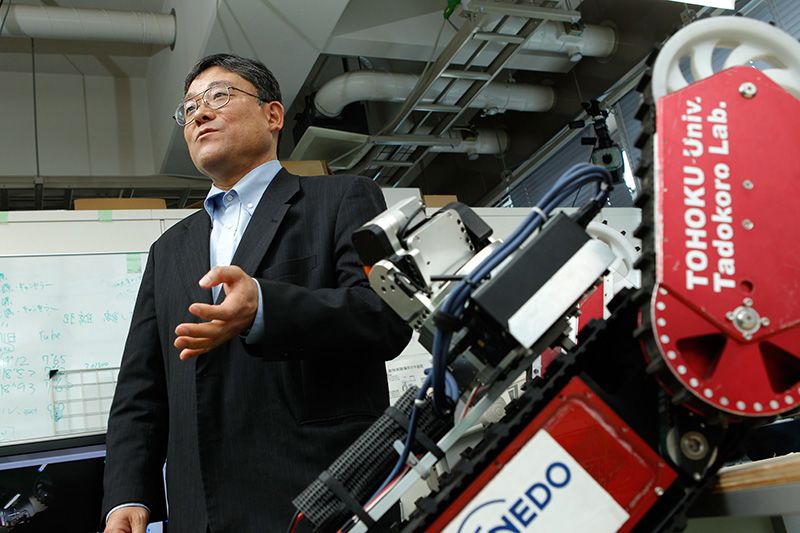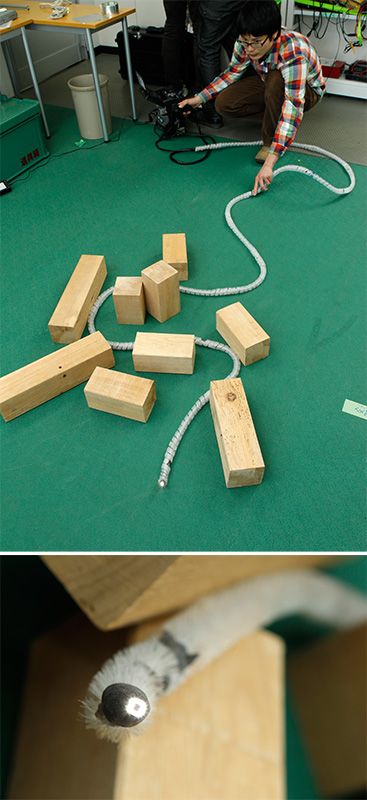
Japan’s Robots: Becoming More Human
Fukushima’s Radioactivity-Proof Cleanup Robot
Science Technology Society Lifestyle- English
- 日本語
- 简体字
- 繁體字
- Français
- Español
- العربية
- Русский
Ever since Fukushima Daiichi was swamped by a massive tsunami in March 2011, people around the world have been keeping an anxious eye on the progress of clean-up operations. But with radiation levels still dangerously high, human beings can only work in the reactor buildings for very limited periods. Enter Quince, a Disaster Relief Robot able to gather crucial data on temperature and humidity and can capture video footage to reveal what is happening in otherwise inaccessible areas.
The First Domestic Robot on the Scene
 Disaster response robot Quince has played a crucial role in clearing debris since the tsunami disaster of March 2011.
Disaster response robot Quince has played a crucial role in clearing debris since the tsunami disaster of March 2011.
One of many robots helping out with relief efforts, Quince was developed by a research group led by the Chiba Institute of Technology, the International Rescue System Institute, and Tōhoku University. Specifically designed for work in earthquake and volcano relief operations, Quince has no problems dealing with rough terrain and stairs, which can stop other kinds of robots in their tracks.
Before being sent into the firing line, Quince underwent rigorous testing for radiation resistance. The prototype was modified several times to produce a robot that could withstand high levels of radiation. Quince No. 1, dispatched in June 2011, collected samples of dust from the Reactor 2 building, as well as taking video footage and measuring radiation levels on the building’s fifth floor. Unfortunately, however, Quince No. 1 went missing in action during its maiden operation. Communication was lost when a cable snapped and the unit is no longer in use. After further tweaking of the prototype back at the Chiba Institute of Technology, Quince 2 and Quince 3 were dispatched to Fukushima in February 2012.
Responding to User Needs
 Professor Tadokoro Satoshi of Tōhoku University, one of the team of researchers who developed Quince, says the challenges of sending robots to work in the disabled reactor has taught developers important new lessons.
Professor Tadokoro Satoshi of Tōhoku University, one of the team of researchers who developed Quince, says the challenges of sending robots to work in the disabled reactor has taught developers important new lessons.
“Users often don’t understand how robots can help, and researchers don’t know what is needed on the scene, so communication between these two groups is crucial. We need to make improvements based on the requirements of the end user, in the same way that people collaborated to develop new smart phones.”
Tadokoro has previously worked in collaboration with firefighting and earthquake disaster experts on robot development projects. But he says he feels that grassroots collaboration between individuals has reached its limits. Tadokoro argues that responding adequately to a national crisis like Fukushima requires a centralized research and development hub where people from different backgrounds can collaborate.
Robots to Help People
 The active scope camera developed in Professor Tadokoro’s lab. A close-up of the camera is shown in the photos below. With its ultra-thin ciliary drive structure, the camera is highly mobile even amid the rubble of a disaster area.
The active scope camera developed in Professor Tadokoro’s lab. A close-up of the camera is shown in the photos below. With its ultra-thin ciliary drive structure, the camera is highly mobile even amid the rubble of a disaster area.
What sort of robots would be made at such an R&D hub? What sort of robots does Tadokoro have in mind?
“The most important thing is to respond to users’ needs and provide tools that truly make a difference in terms of coping with a disaster. I am not interested in theoretical questions: whether robots should be humanoid or autonomous or whatever. You can think of most robots as having four elements: mechanical, electrical (sensor, circuit, or other), information processing, and human interface. But as long as it’s useful to people, I don’t care what people call it.”
People understand the term “robot” in different ways. But it is this diversity of interpretations that drives people to develop different kinds of robot. Defining the term more narrowly might limit the potential for the future.
By helping with crucial work in radioactive areas, Quince reduces the amount of radiation to which human workers are exposed. Quince may not be working alongside human workers, but the robot is playing a crucial role nonetheless in allowing this dangerous work to go ahead.
(Originally written in Japanese by Hayashi Aiko. Photographs by Ōkubo Keizo.)
robot Fukushima Daiichi Nuclear Power Plant Hayashi Aiko Quince Tohoku University Satoshi Tadokoro building disaster response robot Chiba Institute of Technology International Rescue System Institute